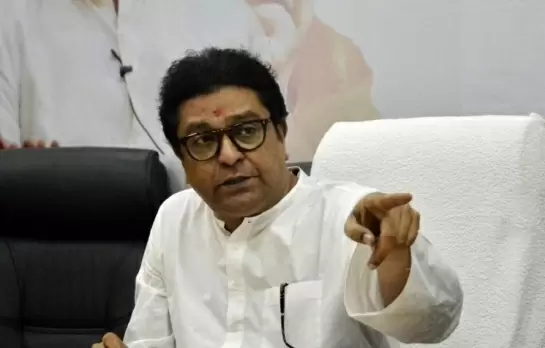Why 'Make in India' is an anachronism
27-September-2014
Prime Minister Modi's ambitious campaign to turn India into a global manufacturing hub aims to develop infrastructure and make it easier for companies to do business. The hope is to bump up manufacturing from 15 percent of gross domestic product (GDP) to 25 percent.
But the challenges were highlighted by a seemingly small gaffe: The program was launched with brochures distributed on a smart-looking USB flash drives that was made in China.
India imports two-thirds of its electronics, mostly from China. So does much of the world, including the US. The most American of products, from the world's most valuable company, Apple, is famously designed in California, made in China.
Both manufacturing and services now span enormous global networks, with pockets of strong expertise (like India, in services) supplying to the world.
And so, the enormous spend and resources for "Make in India" would give better returns elsewhere. Such as in our services industry. Or in building up a ecosystem for renewable-energy services and products, so that by 2020, India can dominate that sector.
Here're five reasons why:
Manufacturing (like services) is a globally-collaborative exercise today involving product design, software, hardware, and testing. The value lies in design, IP and software, and not in manufacturing. Apple manufactures almost all of its products outside the US, mostly in China. But its Taiwanese contract manufacturer Foxconn makes 3 percent margin while Apple, in California, makes 30 percent margin. Value is where IP, design and software are. Not where manufacturing happens.
"Make in India" needs enormous investments in the ecosystem for a gradual build-up. "Local manufacturing" objectives are often an afterthought in India. India's Aakash tablet -- "the world's cheapest" -- was once purely an education project that got delayed and derailed by the "make in India" objective.
The education objective got diluted as focus shifted to manufacturing. But the ecosystem didn't exist: No single contract manufacturer could supply even a fifth of the numbers required. While the private-brand equivalent Ubislate was made in China and was sold in large numbers in India, the United Progressive Alliance's (UPA) Aakash got delayed, and, with the change of government, its fate is uncertain.
Tech manufacturing is no longer dependent on abundant cheap labour as much as other factors, especially capital. For years, India tried to woo Intel and others to set up chipmaking. The most persistent wooing happened when Dayanadhi Maran was IT minister. But, instead of "India" the focus became Tamil Nadu. Now, chip fabs don't require cheap labour. They need enormous capital investment, subsidised electricity, clean water and silicon, and qualified engineers. India lost the Intel chip fab to Vietnam.
India is now offering a 25 percent subsidy on capital spend and other breaks, for chip fabs, and two fabs are in the works: One near Delhi by a consortium including IBM, and the other in Gujarat, involving STMicroelectronics.
Manufacturing for exports is high-risk, with traditional sectors also approaching a tip-over point in automation beyond which it makes more sense for the West to source locally. Textile manufacturing is returning in pockets from India to the US, because it's cheaper to make the fabric there in automated mills, there's better control, and even the overall cost of making full garments isn't that much higher.
The clothing company American Giant used to buy fabric from India: Now it says it's cheaper in the US, and the total cost of making a jacket is only about a fifth higher in the US than in India. As the NYT reported the company has switched from a supplier in Haryana to one in South Carolina, where they found the control, quality and timeline justifies the 20 percent higher spend. China has also been facing the displacement of labour in its factories.
There are way more jobs in services than in manufacturing. Wherever you build up competence, there's a global services opportunity. Whether in software for banking, or services for the space age-launching satellites and sending orbiters to the planets. And services generate enormous number of jobs. Even with increasing automation in services, newer jobs are created.
We are, however, slow to capitalize on global trends, especially when they go against the current grain of business, or when manufacturing may appear to face off with services. India is the world's BPO back office. But it continues to train hundreds of thousands of youngsters in BPO areas, while the trend is toward increasing automation of both voice (IVRS and voice recognition) and non-voice processes.
The opportunity of the future lies in using our knowledge to design systems and software that will disrupt our own BPO services industry. If we don't do it, someone else will -- an American or European tech company, probably using Indian developers. In this example, the Indian BPO industry will get disrupted anyway, and we won't get the technology upside.
Our few manufacturing success stories of recent decades, such as in automobiles, show the direction: Target local market first, invest in infrastructure, build up the ecosystem. It's a very long haul, and in a competitive global marketplace, it's a tough road. The money is better spent elsewhere.
(Prasanto K. Roy is a technology analyst. The views expressed are personal) - IANS
Suspended Kerala IAS Officer Prasanth Raises Promotion Demand During Hearing
How BluSmart Promoters Diverted EV Loans, Bought Flat In DLF Camellias
Homegrown Coffee Chain Nothing Before Coffee Raises $2.3 Million Funding
Supreme Court to Hear Pleas Challenging Waqf Act 2025 Today
Kerala Minister Slams NCERT for Hindi Titles in English Textbooks








